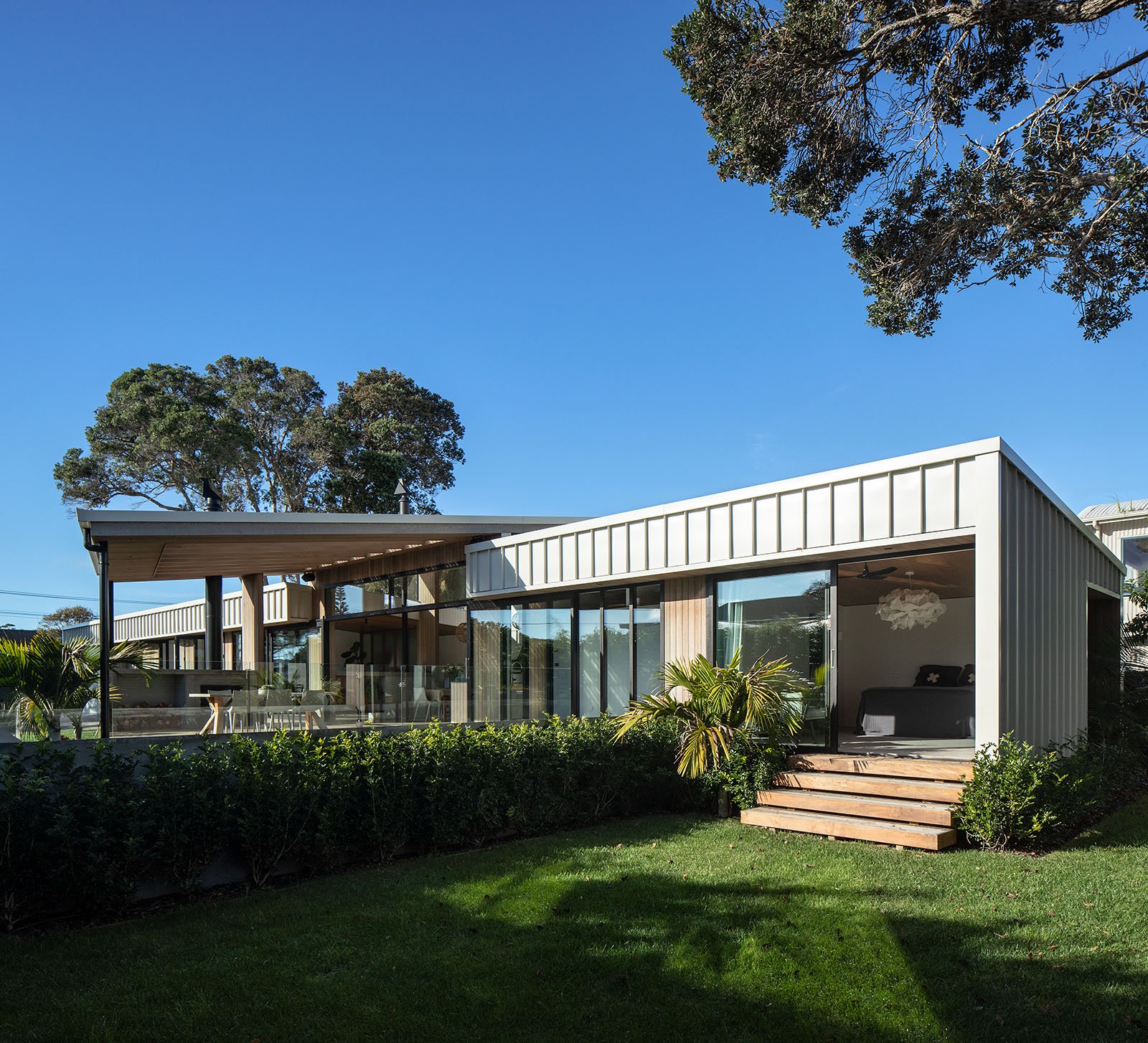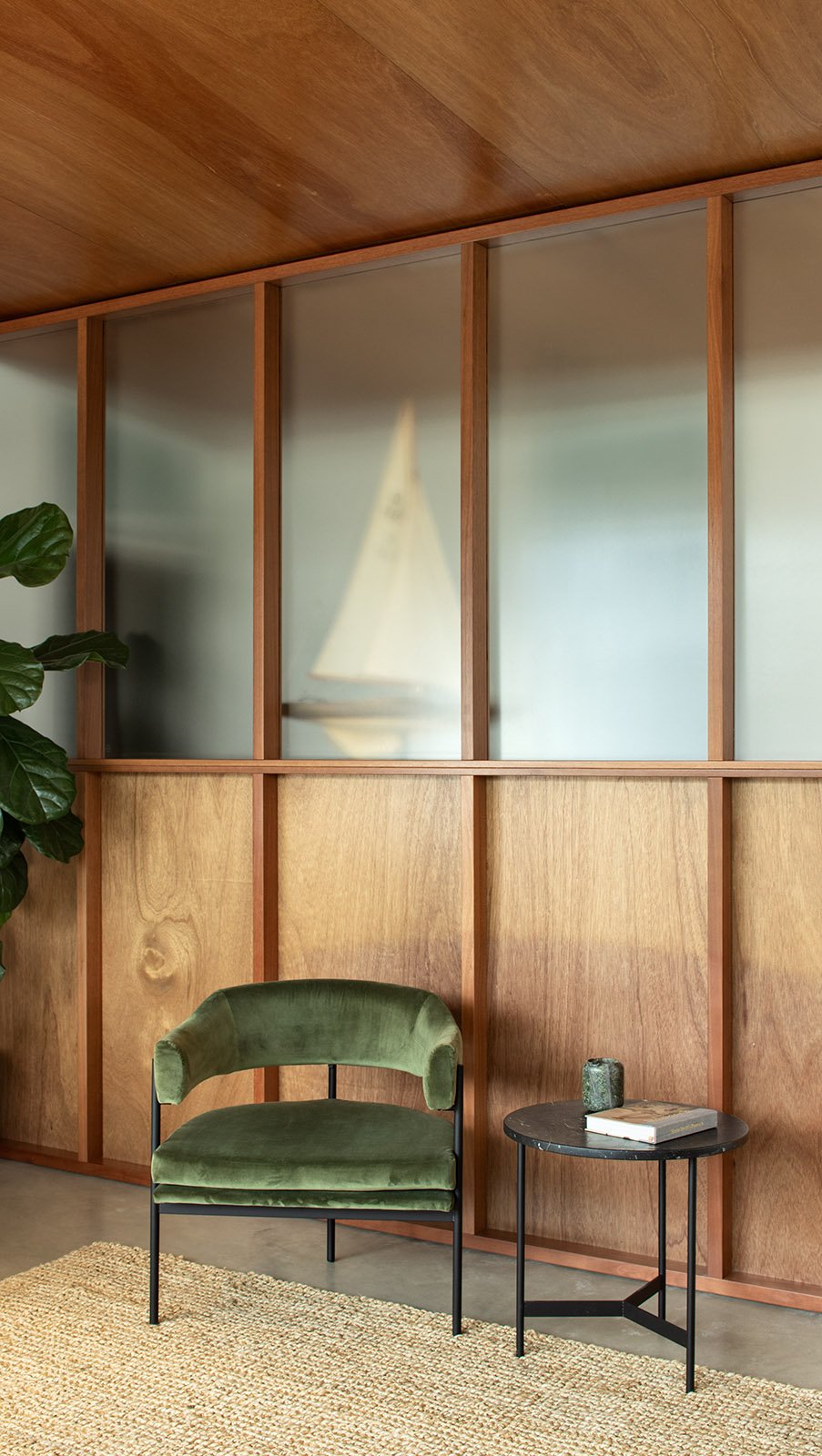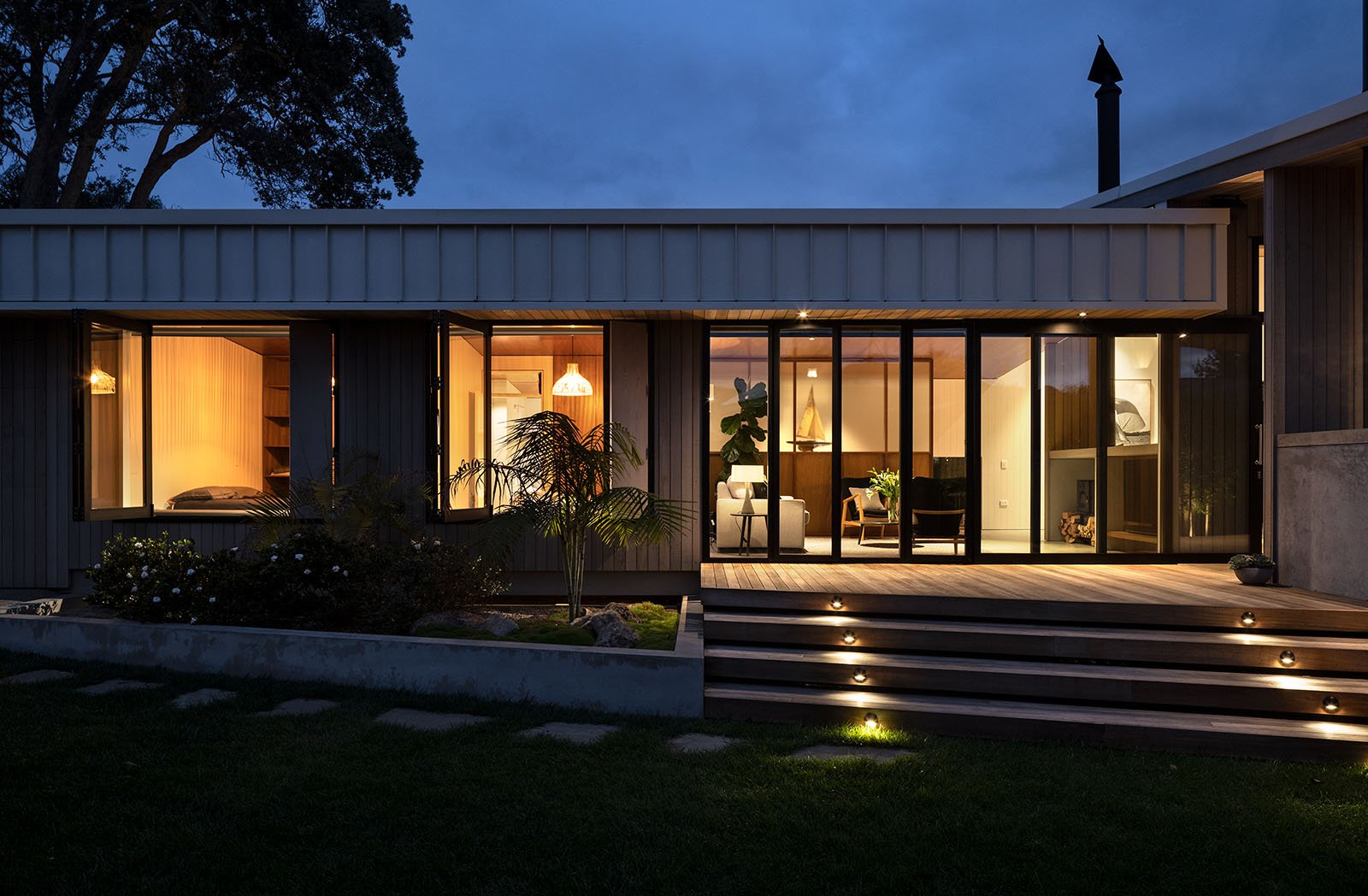
The client’s family have been holidaying and sailing the waters of Manly Beach, Whangaparaoa Peninsular for four generations. Having purchased the site and classic two-bedroom bach 15 years earlier, the time came for the growing family to build a new beach house to accommodate their 3rd generation boaties and ultimately become home for the couple in their later years.
An elaboration on the theme of the New Zealand bach, the design process began with a single level monopitch form and a nod to the mid-century. The structure hovers above the ground due to flood plain requirements, long and low to the north, with an opposing roof plane over the main living areas that ascends southward.
In plan, an angular axis is expressed with a raised garden, gentle entry steps and deck, which receives guests into the outdoor room that widens to encapsulate the pool and catch the afternoon sun. This move draws visitors into the heart of the home, the high-volume kitchen and dining space, with outdoor living either side. High level glazing to the east and west provides morning and afternoon sun while drawing the eye upwards, to reveal the mature Pohutakawa at either end of the site. This lofty space is dramatic in contrast to the modest and comfortable sleeping quarters on either side. Essentially a dumbbell arrangement, the private master suite is accessed (past the secret kitchen scullery) via a glazed hallway, dappled in watery light from the adjacent pool and far removed from the guest wing comprising of twin rooms and built in bunks for the grandchildren.
The low maintenance colorsteel exterior is sculpted along the northern elevation to provide sun control to glazed apertures, cuts away to reveal the tactile and soft materials of an inviting interior. The silvered vertical cedar boards continue inside the main breezeway, to further reinforce the seamless flow between the exterior and interior living spaces. Subtle nautical themes are integrated, as well as extensive built in furniture and cabinetry. A restrained interior palette of white painted ply walls, concrete, gaboon plywood, eucalyptus saligna, and silvered cedar provide a natural and relaxed atmosphere.
As the family’s personal yacht club, it is a building that can host wider neighbourhood and family functions with ease. On the wall, a photograph of Flying Cloud hangs proudly, a shrine to their forefather and the boat which he built in 1952 to win the Sanders Cup.
Photography by © Simon Devitt
2020 Trends International Design Awards - Architect Designed Kitchen, Runner Up
2019 Best Awards - Bronze Award Residential
























